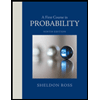If the distribution of hate crimes was normally distributed, we would expect 68 percent of the data points to be within 1 standard deviations of the mean? 6. What percent of your 12 data points fall within u SD on both sides of your mean)? You will need to count how many of the 12 data o to u +o (In other words 1 points fall within these two values, then divide by 12. % Give answer as a percent. 7. Get u 20 (The mean - 2* the standard deviation: Two SD below the mean) 8. Get u + 20 (the mean + 2* the standard deviation: Two SD above the mean) the distribution of hate crimes was normally distributed, we would expect 95 percent of the data points to be within 2 standard deviations of the mean? 9. What percent of your 12 data points fall within u 2σ to μ 2σ ( In other words % Give answer as a 2 SD on both sides of your mean)? percent.
If the distribution of hate crimes was normally distributed, we would expect 68 percent of the data points to be within 1 standard deviations of the mean? 6. What percent of your 12 data points fall within u SD on both sides of your mean)? You will need to count how many of the 12 data o to u +o (In other words 1 points fall within these two values, then divide by 12. % Give answer as a percent. 7. Get u 20 (The mean - 2* the standard deviation: Two SD below the mean) 8. Get u + 20 (the mean + 2* the standard deviation: Two SD above the mean) the distribution of hate crimes was normally distributed, we would expect 95 percent of the data points to be within 2 standard deviations of the mean? 9. What percent of your 12 data points fall within u 2σ to μ 2σ ( In other words % Give answer as a 2 SD on both sides of your mean)? percent.
A First Course in Probability (10th Edition)
10th Edition
ISBN:9780134753119
Author:Sheldon Ross
Publisher:Sheldon Ross
Chapter1: Combinatorial Analysis
Section: Chapter Questions
Problem 1.1P: a. How many different 7-place license plates are possible if the first 2 places are for letters and...
Related questions
Question

Transcribed Image Text:### Understanding Normal Distribution in Hate Crime Data
#### Concept of Normal Distribution
If the distribution of hate crimes was normally distributed, we would expect 68 percent of the data points to be within 1 standard deviation of the mean.
#### Exercises:
**6. Data Points Within One Standard Deviation**
- **Question**: What percent of your 12 data points fall within \( \mu - \sigma \) to \( \mu + \sigma \) (1 standard deviation on both sides of your mean)?
- **Task**: Count how many of the 12 data points fall within these two values, then divide by 12.
- **Answer Format**: Provide your answer as a percent.
**7. Calculating Two Standard Deviations Below the Mean**
- **Formula**: Calculate \( \mu - 2\sigma \) (the mean minus 2 times the standard deviation).
**8. Calculating Two Standard Deviations Above the Mean**
- **Formula**: Calculate \( \mu + 2\sigma \) (the mean plus 2 times the standard deviation).
#### Further Insight on Normal Distribution:
If the distribution of hate crimes was normally distributed, we would expect 95 percent of the data points to be within 2 standard deviations of the mean.
**9. Data Points Within Two Standard Deviations**
- **Question**: What percent of your 12 data points fall within \( \mu - 2\sigma \) to \( \mu + 2\sigma \) (2 standard deviations on both sides of your mean)?
- **Answer Format**: Provide your answer as a percent.
Expert Solution
This question has been solved!
Explore an expertly crafted, step-by-step solution for a thorough understanding of key concepts.
This is a popular solution!
Trending now
This is a popular solution!
Step by step
Solved in 2 steps with 1 images

Knowledge Booster
Learn more about
Need a deep-dive on the concept behind this application? Look no further. Learn more about this topic, probability and related others by exploring similar questions and additional content below.Recommended textbooks for you

A First Course in Probability (10th Edition)
Probability
ISBN:
9780134753119
Author:
Sheldon Ross
Publisher:
PEARSON


A First Course in Probability (10th Edition)
Probability
ISBN:
9780134753119
Author:
Sheldon Ross
Publisher:
PEARSON
